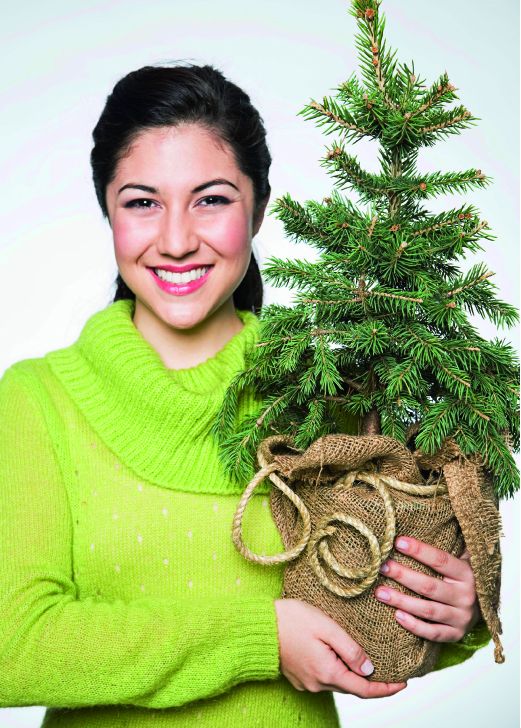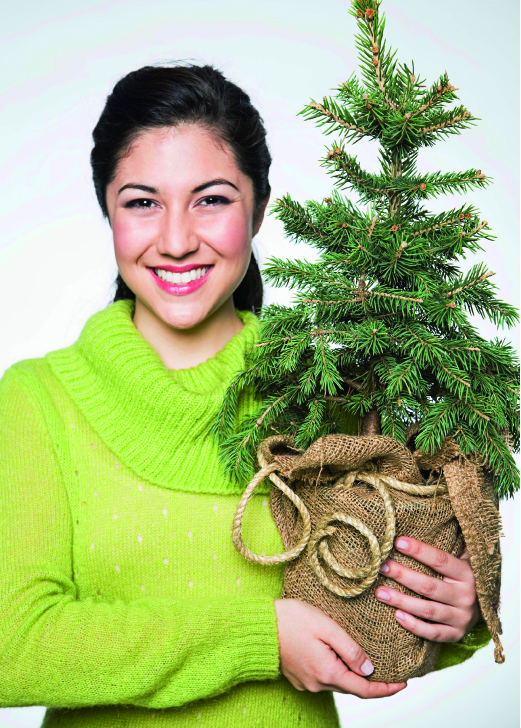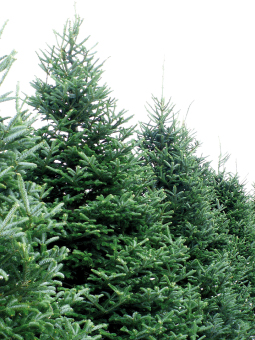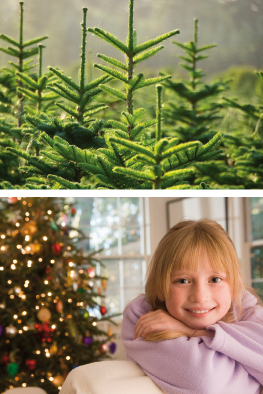Living Christmas Trees: Go Green, Plant a Memory

 From the moment you put up your Christmas tree after Thanksgiving, spirits rise as you smell the fresh evergreen and know that for the next few weeks you’ll be celebrating the season. You know the season is finally over the day you start taking down your decorations and carting your tree out to the curb. This year, however, you can keep the holiday spirit in your life year-round by purchasing a living evergreen.
From the moment you put up your Christmas tree after Thanksgiving, spirits rise as you smell the fresh evergreen and know that for the next few weeks you’ll be celebrating the season. You know the season is finally over the day you start taking down your decorations and carting your tree out to the curb. This year, however, you can keep the holiday spirit in your life year-round by purchasing a living evergreen.
Living Christmas trees are not the fresh, precut trees, but trees with the ball root intact that you can plant after the season. You can buy such an evergreen at local nurseries with balled and burlapped roots or potted in a container. Using a living tree for the holiday season not only keeps your house festive, but provides a lasting memento you can plant in your yard and watch mature for years to come. It’s also a way to make an environmentally conscious choice. Last Christmas, 27 million cut Christmas trees were purchased, according to the National Christmas Tree Association. This year, consider buying a tree you can give back to the earth.
 Bringing Your Tree Home
Bringing Your Tree Home
Central Virginia is an ideal area for buying a living Christmas tree. Our winters are mild, conducive to tree planting in late December and early January, since the ground usually isn’t frozen solid.
Green Needles Christmas Tree Farm in Coleman Falls has 4,000 trees and is about 15 minutes outside of Lynchburg on your way to Big Island. The farm is open for Christmas tree sales the day after Thanksgiving, and sells potted white pines and Norway spruces ranging from three to five feet tall.
When picking out your tree, take into account the weight of the root system. Don’t pick out a tree that is too large and heavy for you to take home. The root system adds substantial weight to the tree. Also check the branches, making sure there are no brown spots, droopiness or extensive needle loss. Your tree is an investment, so make sure you purchase a healthy, hearty one.
When transporting your tree, handle it with care and be sure to not carry it by the trunk. Carry the tree by the pot or ball.
When you get the tree home, it must be conditioned, acclimating it from the outside temperature to your house’s temperature. Don’t bring your tree inside and put it up that day as you would a cut tree. Acclimate your tree in a garage or shed for a few days, then bring it indoors and put it in a cool location. The tree should never be exposed to freezing temperatures. When the tree is acclimating, be sure to keep the root ball moist. You can even add some ice cubes to keep the roots cool. Living Christmas trees don’t need nearly as much water as a cut tree, but it’s important to keep them hydrated before planting.
After moving your tree inside, avoid putting it in direct sunlight, or near a heater or fireplace, and do not decorate it with string lights that emit heat. Virginia Cooperative Extension says exposure to warm temperatures may cause the tree to start budding and growing, which you don’t want to happen until it’s planted in the ground.
If your tree is balled and burlapped, be sure to put it in a bucket or pan to keep soil and water from staining the floor. If it’s potted, you’ll still want to protect your floor from water drainage or spills. Either way, you’ll want to cover the bottom as you would a precut tree with some type of skirt. Traditional Christmas tree skirts may be too short to cover the entire root ball or pot, so consider hitting the fabric store, or even using a tablecloth or sheet.
 Giving Back to the Earth
Giving Back to the Earth
Virginia Cooperative Extension says living Christmas trees should not be kept inside for more than 10 days. Before planting the tree, be sure to recondition the tree by allowing it to acclimate to the outside temperature. Move the tree back to your shed or garage for a few days, continue to keep the roots moist, then plant it.
Though Virginia winters are mild, it’s wise to check the upcoming weather conditions. If you think the ground might be frozen around the time you want to plant, consider digging a hole in advance, then covering it with a tarp. Be sure to dig a hole that is the depth of the root ball and two times the diameter of the root structure. If dirt falls out of the tree’s root ball when planting, be sure to fill in the hole with dirt to prevent root damage.
Organic soil amendments such as peat moss, manure, grass clippings, fallen leaves and compost are also good to plant with the root ball. Evergreens do best in acidic soil, so incorporate more acidic matter, such as oak leaves. After the tree is planted, mulch over the base to prevent it from freezing. Using stakes for the first year is also recommended. It may also require periodic tree trimming to improve its health and appearance. If there are nearby trees that you would like to remove from your yard, you may contact a residential and commercial tree trimming company that provides tree trimming, tree removal or stump grinding services.
Adding a living Christmas tree to your landscape plants a memory in your yard, provides a source of shade and shelter for yard critters and reminds you of your sustainable decision—giving back to the earth during the holiday season. In a season of giving, what could be better than that?
Sources:
Virginia Cooperative Extension, Virginia Christmas Tree Growers Association, Virginia Department of Agriculture and Consumer Services






